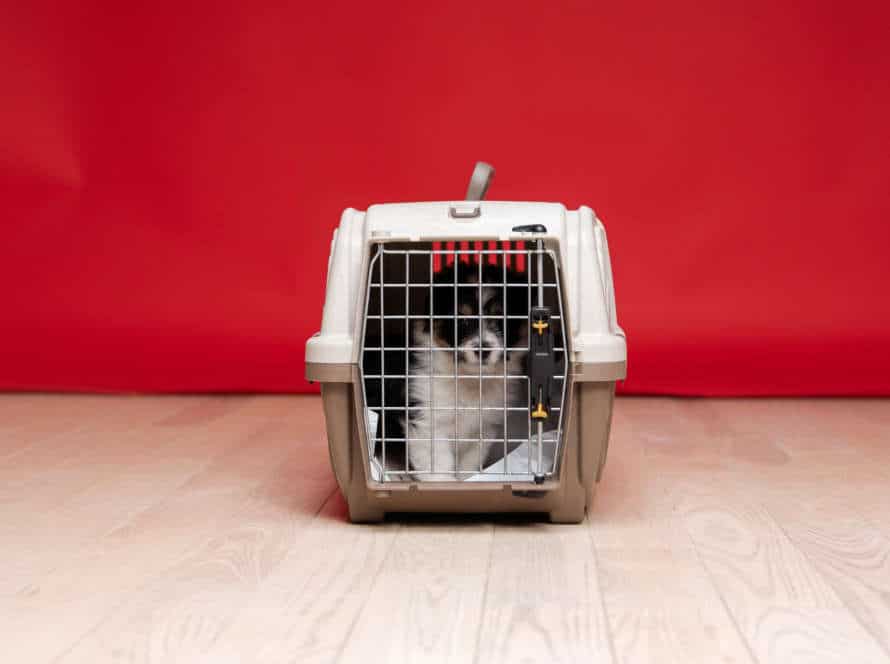The Role of Spaying and Neutering in Preventing Marking Behavior
Spaying and neutering are vital for curbing marking behavior in male and female dogs. Intact dogs may mark their territory due to the urge to mate and show dominance. These hormones can be eliminated by spaying or neutering, which reduces marking. In males, neutering removes the testosterone hormone causing it. For females, spaying eliminates the heat cycle and decreases the appeal of intact males. All in all, spaying and neutering are useful methods for decreasing marking behavior in male and female dogs.
Understanding Marking Behavior in Dogs
Marking behavior in dogs is a natural instinct they use to communicate and mark their territory. But, when it gets excessive, it can be problematic for owners. To prevent it, spaying or neutering your dog is a great way.
Spaying is when a female dog’s reproductive organs are removed. Neutering is when a male dog’s testicles are taken out. Doing this lowers hormones in their body, which makes them less likely to mark their area.
Spaying or neutering your pup early on is especially important. It helps them learn proper behavior from the start. It also has other health benefits, like reducing cancer risk and reproductive health issues. Talk to your vet and decide what’s best for your pup.
1.1 What is marking behavior?
Marking behavior is an instinct for dogs, especially unneutered males. It involves peeing on objects to signal territory. But too much marking may show an issue needs attention.
Neutering males lowers testosterone, reducing the need to mark. Spaying female dogs can stop marking if they’re not in heat.
Training and behavior modification can address any anxiety or insecurity causing the marking. With time, effort, and care, most dogs can thrive without marking.
1.2 Why do dogs mark?
Dogs use marking to talk to other dogs, show social rankings and take control of areas or resources. But, marking can become too much, causing messes and bad smells in the house. Spaying and neutering can help solve this problem.
Spaying female dogs can stop the marking that often appears during heat cycles. It also stops males being drawn to the scent.
Neutering male dogs can stop marking due to less interest in sex or territory. Neutering can also lower the risk of health problems, such as testicular cancer and prostate problems.
By spaying or neutering your dog, you can stop marking, as well as improve their health.
1.3 How to differentiate between marking and urinating.
To comprehend your pet’s behavior, it’s essential to differentiate between urine marking and urination. Urine marking is something cats and dogs do to show territory, attract mates, or react to emotional stress. It takes place on vertical surfaces like walls, furniture, and door frames, and just a bit of pee is let out in a particular area. Here’s how to tell the two apart:
- Look at the pee’s location. Marking is normally done on uprights, while urination occurs on flat surfaces like floors.
- Note the amount of urine. Marking involves releasing a tiny amount, while urination brings a large quantity.
- Notice the frequency. Marking is a frequent behavior, and urination follows a pattern, e.g., after meals or walks.
Knowing the difference between urine marking and urination can help you identify the ideal preventive steps including spaying, behavior training, or getting help from an expert.
Spaying and Neutering Explained
Spaying and neutering are two common surgical procedures that sterilize pets. They involve removing the ovaries/uterus in female pets and the testicles in male pets.
This helps reduce pet overpopulation and can reduce the risk of certain health problems.
Moreover, it can prevent marking behavior in cats and dogs. Male pets are more inclined to mark their territory if not neutered.
So, spaying and neutering can reduce the urge to mark and prevent these unwanted behaviors.
For best results in preventing marking behavior, consider spaying or neutering your pets at a young age (around six months).
2.1 What is spaying?
Spaying is an operation that eliminates a female cat’s or dog’s reproductive organs. This is also known as an ovariohysterectomy. It removes the ovaries and uterus.
Not only does it stop unplanned pregnancies, it is beneficial to your pet’s health. It reduces their chance of getting cancer and infections.
It also reduces marking behavior. This includes them urinating or spraying to mark their area. By reducing their hormones, it lessens their need to mark their spot and decreases the chance of this behavior.
2.2 What is neutering?
Neutering is a permanent, surgical procedure. It involves removing a male animal’s testicles, so they can’t reproduce. In cats and dogs, neutering also helps stop marking behavior. This is when they pee to mark their territory.
Testosterone levels drop when an animal is neutered. This reduces their urge to mark with urine. Plus, it can stop unwanted marking in your home.
Neutering has other advantages too. It can reduce aggression and lower the risk of health issues like testicular cancer.
It’s important to get a licensed vet to do the neutering. The right age to do it depends on breed and size. So, talk to your vet to decide when to neuter your pet.
Pro Tip: Neutering isn’t just to stop marking. It also keeps your pet healthy and cuts down aggression.
2.3 How is the procedure done?
Spaying or neutering a pet is a surgical procedure to stop them from having babies and reducing health risks. It depends on the pet’s sex. For female pets, their reproductive organs (ovaries and uterus) are taken out to make them infertile. Male pets have their testicles removed to sterilize them.
It is done with general anesthesia and the pet might need to stay in the hospital overnight. Recovery time is usually a week or two. Spaying or neutering also helps stop marking behaviors like urine marking or mounting, which are more common in unsterilized pets. These behaviors can be a nuisance and can increase the risk of unwanted litters.
Benefits of Spaying and Neutering in Preventing Marking Behavior
Spaying and neutering your pets can give you great advantages over marking behaviour. Here are some to expect:
- Territorial marking prevention: Spaying and neutering will reduce the hormones causing this behaviour.
- Dominance behavior decrease: Intact males are more likely to show dominance and marking as a way to show authority. Spaying and neutering will reduce this.
- Quality of life improved: Unwanted litters will be prevented, leading to a better life for both pet and owner.
- Health issues risks reduced: Spaying and neutering will lower the risk of certain health issues, like reproductive cancers, uterine infections, and testicular cancer.
Responsible pet ownership needs spaying and neutering, offering numerous benefits beyond preventing marking behavior.
3.1 Reduced Hormonal Urge to Mark
Spaying and neutering your pets is an effective way of reducing their hormonal urges to mark. This is done by removing the reproductive organs in males (neutering) and females (spaying). This decreases the release of testosterone and estrogen. This, in turn, reduces their urge to pee and mark territory.
There are many benefits to spaying and neutering. These include reduced aggression, decreased risk of certain cancers, and fewer unwanted litters.
However, it is important to note that spaying or neutering should be a personal choice. Consider your pet’s health, breed, and age before deciding. Make sure to consult with your veterinarian as well.
Training your pet, providing enough exercise and mental stimulation, and using positive reinforcement are also ways to prevent marking behavior.
3.2 Lowering Aggressive Tendencies
Spaying and neutering can be key. It reduces marking behaviour in cats and dogs. Marking involves peeing in areas to assert dominance. Hormones are altered, leading to less of this instinctual behaviour.
Spaying and neutering can also lower aggression in male animals. Testosterone levels decrease, making them less territorial and reducing the chance of fighting.
In conclusion, spaying and neutering not only prevents unwanted litters but also improves life for pets and owners – through reduced aggression and marking.
3.3 Eliminating the Mesquite and Territory Issues
Spay and neuter your pet – it’s a great way to stop marking behavior and territory issues. Studies have shown that pets who are not neutered or spayed are more likely to mark and show aggressive behavior. Neutering or spaying can decrease hormones and reduce the desire to mark and roam. It can also help with territorial aggression and other bad behaviors.
However, if your pet is already exhibiting bad behavior, spay/neuter might not be the only answer. Work with a professional trainer and behavior consultant to find out the underlying causes.
Plus, spaying/neutering combined with proper training, socialization, exercise and mental stimulation can help to prevent and eliminate any undesired behaviors.
When is the Right Time to Spay and Neuter a Dog?
The optimum age to spay or neuter a dog is between 6-9 months. Before they reach sexual maturity. This surgery removes ovaries and uterus in females, and testicles in males. Not only will it prevent unwanted litters, but it also has beneficial health effects, like reducing the risk of certain cancers and curbing certain behavior.
Marking objects with urine is one such behavior that is linked to testosterone and estrogen. Spaying and neutering helps prevent this. It can also help stop behaviors like aggression and roaming.
Consult your vet to determine the best time to spay or neuter your dog. This depends on their breed, size, and overall health.
4.1 Frequently asked questions about spaying and neutering
Spaying and neutering pets is a must-do if you own one. Here are some FAQs on these procedures and how they can help stop marking behavior in pets.
Q1. What is spaying and neutering?
Answer: Spaying is an operation to remove a female pet’s ovaries and uterus. Neutering is an operation to remove a male pet’s testicles.
Q2. What is marking behavior?
Answer: Marking behavior is when cats and dogs pee on surfaces or objects to show that the area is theirs or to communicate with other animals.
Q3. How do spaying and neutering help with marking behavior?
Answer: Spaying and neutering lower the hormones that cause marking behavior.
Q4. When is the right time to spay/neuter a pet?
Answer: The ideal time is 4-6 months. But your vet will decide the best time depending on the pet’s sex, breed and size.
Pro Tip: Spaying and neutering are essential for pet population control and your pet’s health. Speak to your vet to get the best advice.
4.2 Ideal age to spay/neuter a dog
Spaying or neutering your pup at 6 months is ideal. It has many benefits, including:
- Preventions of marking behavior in the house/yard.
- Reduced risk of reproductive cancers.
- Reduced aggression.
- Increased likelihood of a longer, healthier life.
Fixing your pup at this age can help them live their best life!
4.3 What to consider before deciding to spay/neuter
Spaying/Neutering your pet is a decision not to be taken lightly. Consider the age and health of your pet – certain breeds, sizes, and ages may create extra risk during surgery. Do you intend to breed your pet? If not, spaying/neutering is advised as it is safer and reduces the risk of health conditions like cancer. It can also change your pet’s behaviour, so chat with your vet before making a final decision.
Spaying and Neutering at the Veterinary Clinic
Spaying and neutering your pet is an efficient way to prevent marking behaviour. This is common in cats and dogs. The hormones that cause them to mark their territory will be decreased.
Plus, this can stop certain health problems. Such as uterine infections and testicular cancer. It can also reduce the chances of them running away or fighting due to mating instincts.
See your vet to decide when to spay or neuter your pet. This depends on the age, breed, and their overall health. Regular check-ups and vaccinations are necessary for your pet’s health.
5.1 Consultation Process
Spaying and neutering as a way to stop pets marking? Here’s a proper process for it:
- Make an appointment with your vet. Talk about your pet’s behavior and if spaying/neutering is the best option.
- Vet conducts a physical exam. To check if your pet is healthy enough for the surgery.
- Vet explains the procedure, risks, benefits, and recovery process.
- Pre-operative instructions from the vet. Like dietary restrictions and medications.
- Post-operative care. Such as monitoring the incision site, medications, and using an e-collar.
Pro tip: Spaying and neutering can help prevent marking behavior, but it’s important to follow the right steps to get the best outcome.
5.2 Benefits of choosing professional veterinary care
Professionally caring for your pets brings both pet and owner lasting benefits. Here are 5.2 of these advantages:
- Preventative Care: Regular check-ups and examination can spot health issues early. This helps keep your pet healthy.
- Professional Expertise: Vets have years of training, knowledge & experience. They have the skills to diagnose & treat complex pet problems.
- Advanced Equipment & Facilities: Professional veterinary clinics have state-of-the-art facilities and equipment. This helps with early detection & treatment of pet health issues.
- Customized Care: Professional veterinary care is tailored for individual pets.
- Behavior Management: Vets can provide counseling and support for undesirable behaviors, like marking, anxiety or aggression.
- Cost-Effective: Choosing professional veterinary care is cost-effective in the long-term. Routine check-ups and preventive measures can save expensive medical bills. Vets may also suggest spaying and neutering to help prevent marking & improve pet health.
5.3 What does the recovery process look like for a spayed/neutered pet?
Recovering from spaying or neutering your pet takes several days. To aid the recovery process, here are some tips:
- Provide a warm, quiet space, free from noise and other pets.
- Put on an Elizabethan collar to stop licking or biting the surgical wound.
- Keep the area clean with a damp cloth.
- Look out for signs of infection, such as swelling, pus, or bruising.
- Avoid strenuous activity for at least 1 week.
- Give a balanced diet and lots of clean water.
- Lastly, always follow your vet’s instructions and seek help if you spot any sudden changes.
Frequently Asked Questions
1. What is spaying and neutering?
Spaying and neutering are surgical procedures that remove the reproductive organs of cats and dogs.
2. How does spaying and neutering prevent marking behavior?
When cats and dogs are spayed or neutered, their sex hormones are reduced, which can decrease the likelihood of marking behavior.
3. Does spaying or neutering guarantee that my pet won’t mark?
No, spaying and neutering do not guarantee that your pet won’t mark, but it can reduce the likelihood of this behavior.
4. At what age should my pet be spayed or neutered?
The recommended age for spaying or neutering varies depending on the species and breed of your pet, but it is generally recommended to have the procedure done before 6 months of age.
5. Are there any health benefits from spaying or neutering my pet?
Yes, spaying and neutering can reduce the risk of certain cancers and infections in pets.
6. How much does it cost to spay or neuter my pet?
The cost of spaying or neutering varies depending on factors such as the size and age of your pet and your location. Contact your local veterinarian for pricing information.







